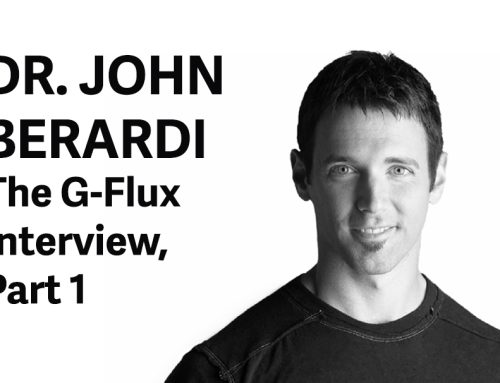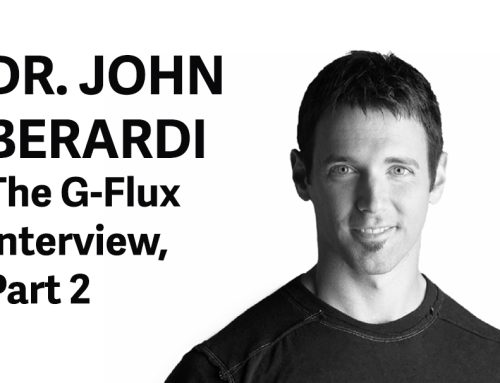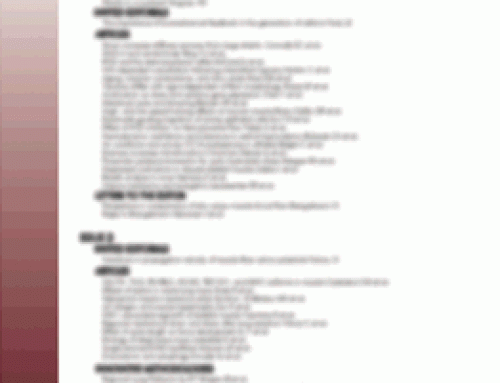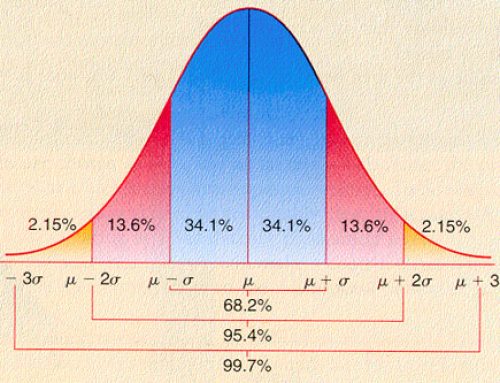NEW EXCLUSIVE FAT LOSS INTERVIEW -” Fat Burning Secrets Revealed”, An Interview With Tom Venuto by world-renowned dietitian to the stars, Dr. Chris Mohr… you’ll learn how the average joe or jane who is not a bodybuilder should train to shape up for a wedding, reunion or to lose 10 lbs, the 10 laws of nutrition that always apply whether you’re a bodybuilder or housewife who wants to lose cellulite, the 5 most important components of successful fat loss, a summary of Tom’s Burn The Fat principles, including the “feedback loop” technique, and much more…
“Fat Burning Secrets Revealed – The Interview”
Featuring Chris Mohr, PhD, R.D.
www.meal-plans-101.com
With Tom Venuto, CSCS, NSCA-CPT
www.BurnTheFat.com
Chris Mohr: You’ve competed 28 times in bodybuilding, but a lot of our readers have more simple goals–lose 10 lbs, shape up for a wedding, high school reunion, etc. How do your fat loss recommendations change from body building to more general “weight loss” (or do they?)
Tom Venuto: In general, bodybuilders have to train harder, they have to put more time in, and they have to be more disciplined. Competing in bodybuilding is a big goal and big goals require a big effort.
But aside from the level of work and discipline that goes into it, the main difference between bodybuilders and non bodybuilders with general fitness and weight loss goals would probably be in the training more so than the nutrition. Good nutrition is just good nutrition. Competition bodybuilding diet may require a stricter approach, maybe fewer carbs, more protein, and more time dieting to reach a lower body fat percentage, but the basic principles are the same:
That includes:
- a calorie deficit
- small frequent meals
- a lean protein with every meal
- a balance between lean protein and natural carbs
- plenty of fiber
- a low fat, but not non-fat diet
- fats that include plenty of EFA’s
- a proper ratio of omega 3 to omega 6 fats
- drinking plenty of water
- adequate post workout nutrition
None of this really changes that much from bodybuilder to recreational exerciser, although bodybuilders may be able to utilize more protein, especially when dieting. But it’s the training that would be the most different.
Bodybuilders will almost always do their weight training on a split routine with body part groupings. This is true even on pre-contest fat loss programs. The bodybuilder depends on nutrition and cardio to take off the fat and doesn’t use the weights as a direct means to burn fat – the weights are used as a bodybuilding tool.
For the non bodybuilder, like the person getting ready for a wedding or reunion, it might be more time efficient and practical to use a full body routine. If they go with a split routine, it might be a two day split with half the exercises one day and the other half the next, rather than a traditional body builder split that hits each muscle once a week. 3 weight training sessions a week will do the trick for most people. Bodybuilders on the other hand, might do 4 or even 5 sessions a week.
The workouts then would be set up almost entirely with compound exercises, focusing on squats, lunges, step ups, cleans, deadlifts, rows, pull ups, shoulder presses, chest presses and abdominal/core exercises. The exercises would be done in superset pairs, tri-sets or circuits, so the weight training may lose some of the body-building effect, but it gains a greater fat burning effect and a strong stimulus to the metabolic rate.
People with these types of goals might even use body weight exercises like push ups or callisthenic type exercises like burpees, jumping jacks and so on, mixed in with resistance training. The goal here is literally using weight training for fat loss as opposed to weight training for bodybuilding – there is a distinct difference in training style.
Chris Mohr: When someone is trying to lose fat, what are the 5 most important components of successful fat loss?
Tom Venuto: First is the caloric deficit because this factor trumps all the other factors. You have to burn more calories than you consume to lose body fat. You can kick, scream, and protest all you want but you cannot get around the energy balance equation.
Second is weight training. I guess I take the importance of weight training so for granted that I almost automatically assume everyone is already doing it. But I’m always surprised to hear how few people, especially women, are doing any weight training when their goal is fat loss. I have often said that increasing cardio is the key to fat loss, but I’ve said that with the assumption that the weight training was already in place, not that cardio is adequate without weight training. If anything, I’d say get the weight training in place first, then add the cardio, and increase cardio as results dictate.
Third is cardio training. I’ve seen just about every kind of cardio produce results, from walking to high intensity interval training, so all exercise is good exercise as far as I’m concerned, but if you want maximum efficiency, at least some of your cardio should be high or at least moderate in intensity if you are already fit and free of orthopedic or cardiovascular problems that would contraindicate higher intensity work. I also believe in cardio progression, where cardio is increased in intensity, duration or frequency, or changed to more challenging types of cardio, if a plateau needs to be broken.
Fourth is cycling the calories, meaning a zig zag or reefed approach instead of staying on low calories and or low carbs all the time. Also periodic breaks in the deficit by going up to maintenance levels when there is a long term weight loss goal that requires more than 12-16 weeks to achieve. This has been a secret diet weapon of bodybuilders for as long as I can remember, so I’m actually surprised this method hasn’t caught on more in the mainstream. If you look at the research on Leptin, you can see there is a scientific basis for carb cycling, and there’s a practical basis too as it improves compliance since the dieter gets to eat more with a periodic clean food re-feed, in addition to allowed free meals.
Fifth is get your carb level right for your body type and activity level and don’t be afraid to experiment with a moderate reduction in carbs, if necessary, to improve fat loss, but at the same time remember that #1 is calories, and avoid “carbo phobia.” I’ve found that a moderate decrease in carbs can help with fat loss while maintaining energy, mental focus and lean body mass. For example, .8 to 1.0 grams of carbs per lb of bodyweight is a reduced carb diet similar to what I use before competitions, and I find it quite effective. Extreme low carb diets are not necessary.
Chris Mohr: Tom, you created Burn the Fat, Feed the Muscle, which is the #1 fat loss e-book on the Internet. Can you briefly summarize this program for our readers?
Tom Venuto: Burn The Fat, Feed The Muscle (BFFM), could be described as “the bodybuilding style” of training and nutrition because it’s based on how bodybuilders and figure competitors eat and work out to get so lean, but BFFM is NOT just for bodybuilders. Anyone can use these methods whether the goal is losing 100 lbs, losing 10 pounds or hitting the competition stage.
My overall premise
is that it’s better to exercise more and eat more than it is to eat less (diet) and exercise less. Either way you could have a calorie deficit and lose fat, but the difference is, with the BFFM approach, you get all the benefits of exercise that you don’t get when you’re sedentary and just cutting calories. You also get to eat more, which is a lot more fun, not to mention it allows you to take in more vitamins, minerals, phytonutrients, essential fatty acids and essential amino acids. You could lose fat with any calorie deficit, but very low calories and low activity is not the best way to do it, unless you want to end up a “skinny fat person.”
BFFM is a combination of nutrition with exercise and the exercise portion of BFFM has to include a resistance training element and a cardio training element. If someone isn’t lifting weights or doing some kind of resistance training, they’re not doing BFFM. The cardio element of the BFFM training isn’t prescribed in a specific, rigid amount like many other programs, the amount of cardio is adjusted in “real-time” according to your results.
You simply have to get yourself into a feedback loop where you measure your results every week and then adjust the intensity, frequency or duration based on those results. If you get the results you want, you don’t change a thing. If you don’t get the results you want, you change your training (increase cardio) or nutrition (decrease calories) and then repeat the process for another week. I teach a simple, but very precise system to all my clients for using this feedback loop method. You never have to guess about anything if you just understand this concept.
For more information about Burn The Fat, Feed The Muscle (BFFM), visit: www.BurnTheFat.com
Coming next week in part 2: Why low carb diets may work better than conventional high carb, low fat diets and why its NOT for the reason most people think (this revelation turns the whole low carb “metabolic advantage” theory upside down)… The top 5 most important training secrets for fat loss, including how to use HDT training to burn more fat and build more muscle in less time, how much protein you really need and how to calculate optimal amounts quickly and easily, and much more…
About Dr. Chris Mohr:

Tom Venuto is a lifetime natural bodybuilder, an NSCA-certified personal trainer, certified strength & conditioning specialist (CSCS), and author of the #1 best selling diet e-book, Burn The Fat, Feed The Muscle. Tom teaches you how to lose fat without drugs or supplements using the little-known secrets of the world’s best bodybuilders and fitness models. Learn how to get rid of stubborn fat and turbo-charge your metabolism by visiting www.BurnTheFat.com, home of Burn The Fat, Feed The Muscle and www.BurnTheFatInnerCircle.Com, the Internet’s premiere members-only fat loss support community.







thanks tom, i really enjoy the interviews you’ve been doing. Keep them coming. Looking forward to part 2
1st Tom -thanks for your newsletters – you are great. My propblem is that I am 82 years young, and it seems like you forget about me and my age people. We are still here ! and we intend to stay for more.This is why I, a retired professor of human ecology, and formerly a US National Academy Senior Research member at NASA, Houston , Tx, worked with the manned space flight astronauts (1969), wrote several books to help everybody to keep healthy and fit. It will be my previlage to cooperate with you.Please visit : Amozon.com /books and log in Ervin Y. Kedar and see Lifestyle Intervention for Prevention , Vit-a-Dancing (VaD)/Vit-a-Eating (VaE) and Vit-a-Living (VaL). Best regards, yours, Prof. Kedar
Ervin, thank you for your email! But my goodness, we CERTAINLY have NOT forgotten about your age group.visit http://www.fitover40.netperhaps I will grab my fit over 40 co-author Jon Benson for the next burn the fat interviewbest regards,tom v
i found your research articles and comments extremely usefull, eye opening and informative…you guys are doing a gr8 job.. ..thanx
I had to smile at the carb-a-phobic comment. I’m the fat-a-phobic person. I believed the “fat makes you fat” for so long and now it really is tough for me to add olive oil, nuts, flax oil, fish oil. And, call me crazy, but when I started INCREASING my total cals, I was freaking out. I would tell myself things like there is no way I can lose fat eating this way or I’m eating too much. Uh…HELLO! How the heck did I get to 210lbs if I wasn’t eating huge quantities of JUNK!!!!!!!!!!!!So, I starved myself down to 120, blinked and the weight WAS coming back on. But I kept searching and reading first BTF, then Fit Over Forty and then G-flux. I’m happy to say that the first week I ate 1750kcal per day (I still need to be at 2000kcal) and lost 4lbs. I’m in my 4th week now and at 6lbs down. More importantly to me though, is my body comp is changing. I started at 20.5% and at week 2 I was at 20% and 145lbs. I’ve tweeked my exercises ever so slightly and I’m really liking the results. Oh, and lets not forget how much better my mood is lately.Thanks, Tom for writing BTF and posting all of these informative interviews. I’m finding what works for me and making my plan a lifestyle change rather than a temporary one!
Hi Tom,This is my first comment on your posting. I’m a personal trainer from NJ too. I’ve been following your work and have recommended your Burn the Fat, Feed the Muscle e-book to my circle.I also blog many of your postings since they are all very useful and truly honest.Fat loss is simple, but not easy.Even with so much information today, many people still choose the easy (albeit lazy) way of trying to lose weight. Nutrition is the biggest part of the fat loss equation. But so many people are still so obsessed with different “dieting” methods. Some are counting grams while still eating junk foods. What’s the point?It’s great that you and Dr. Mohr can set the record straight on the part of nutrition for fat loss. I’m looking forward to the remaining interview.Keep up the good work!Careywww.careyforfitness.comcareyforfitness.blogspot.com
Good interview. Thanks as always for your straight forward approach to actually burning fat the right way.
Nice site you all have, I am a webmaster myself and got a few cool ideas from this site.